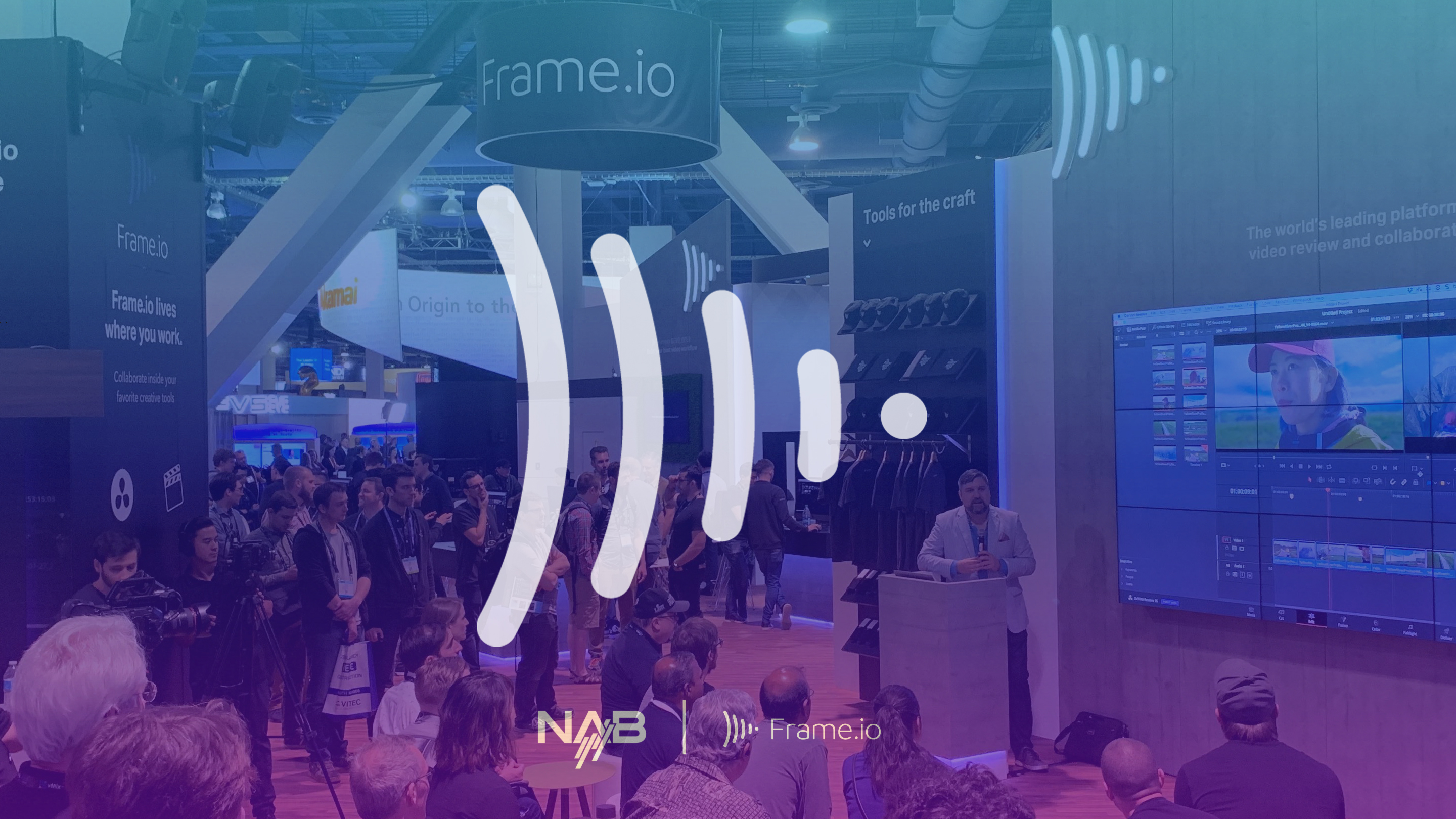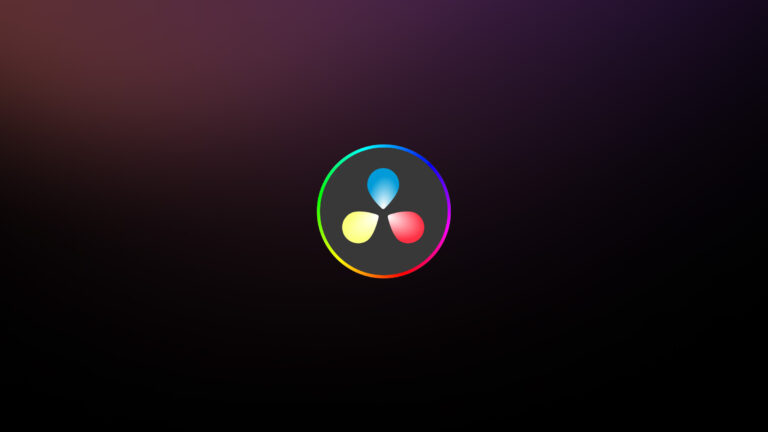Introduction
For NAB 2019 we pulled together an incredible group of speaker sessions, bringing over a dozen leaders and professionals in the world of video production to share insights into their workflow processes. Topics ranged from how BuzzFeed uses the Frame.io API to manage video and user stats and workflow, to Michael Cioni of Panavision and Light Iron making the case for how a universal sensor size can revolutionize the industry.
Starting today we’re releasing these sessions. You’ll find them on our various social channels like Twitter and Facebook—but if you want to be notified of future releases, read the transcripts, or get additional goodies from the speakers, then the Frame.io Insider is the place to be.
First up, Alexis Van Hurkman of Blackmagic Design demonstrates DaVinci Resolve’s hard-coded integration of Frame.io.
Watch the session
Session highlights
In the first video of the session series, Alexis Van Hurkman of Blackmagic Design steps us through one of our most exciting new features—Frame.io’s integration into DaVinci Resolve 16. Here are the highlights to take away from the video.
- This is Alexis’ favorite demo to do because it’s so easy. So easy, in fact, he performed the demo from scratch (as opposed to working with a prepared file).
- Blackmagic’s engineers have made Frame.io a built-in, fully integrated feature that isn’t a plug-in or add-on. It’s fundamental to how Resolve works and uses Resolve’s native UI to facilitate interoperability with Frame.io, enabling you to use Frame.io as both a source and destination for your video.
- As you watch Alexis demonstrate the process, there’s no denying the ease of use; the whole video is only 14 minutes long, if that tells you anything. It’s as simple as signing in to your Frame.io account (you only need to do it once) and Resolve syncs itself with everything you’re working on in Frame.io. You can even link your timeline to previously uploaded clips or movies after the fact!
- Delivering videos is quick and easy. The Frame.io preset appears in the Resolve render settings so you can upload directly to Frame.io. You can even do it in the background, which allows you to work on something else while your cut is uploading. You can check the upload by opening the file in a browser window within Resolve, and can add comments or descriptions before sending it out.
- When you receive feedback from clients, they automatically sync frame-accurately within your Resolve timeline. There’s also a feature that allows you to turn feedback comments on or off so you can control when you want to view comments—or not—and reply to them from within your timeline, as well.
Finally, as proof of concept: Alexis did this demo using clips from a movie he’s directing that he shot in China. He’s been able to collaborate and communicate with his Chinese colleagues on this project because Frame.io (unlike YouTube or Vimeo) is one of the only video-sharing services that goes through the Chinese firewall.
And if he thinks that Frame.io was “a lifesaver” on his project, we hope you’ll enjoy using it as part of Resolve, too.
Video transcript
My name’s Alexis Van Hurkman. If you don’t know me by reputation, I wrote The Color Correction Handbook, and most people know me from my work in color. But I’m also a filmmaker and I also work with the DaVinci Resolve team, as part of their product design team. So I helped design the app. And I also write the manual.
One of the big new changes, the new additions, in DaVinci Resolve 16, which we just announced this week is Frame.io integration. And the thing that’s really cool about our Frame.io integration is the DaVinci Resolve engineering team did it. This is an internal, built-in part of Resolve. It isn’t a plug-in. It’s not an add-on. It’s fundamental to how Resolve works. And as a consequence, we’re basically using our regular UI to facilitate interoperability with Frame.io. So, I’ll show you how it works. And this is my favorite demo to give because it’s so simple. And just to make the point, I’m going to start with a completely blank, new project. So, this isn’t preset. This isn’t pre-built. I’m going to do this. I have an internet connection. Hopefully, it’s working, we’ll find out.
So, first off, I’m going to go to the Media page, which, if you don’t know DaVinci Resolve, the Media page is basically our built-in file browser. So this accesses your file system and all of your volumes. And the media storage area here is basically our window into your file system. So, we have a list of all the volumes attached to your machine. And you can see, we’ve got a Frame.io volume. So, the way that got there, is if you go into Preferences, there’s a brand new Internet Accounts set of preferences. And you can see, we also added interoperability with YouTube and Vimeo. Those are one-way streets. We can upload to those file-sharing services and the video appears. And it’s just a very nice convenience. However, with Frame.io, we actually let you sign into your account via a window, we remember your credentials, so you only have to sign up once.
And we let you specify a cash location. And this cash location is basically, where DaVinci Resolve syncs itself with everything you’re working with, on your Frame.io account to keep everything nice and tidy. So, once you’ve set all that up, Frame.io appears as a Volume. And I can open it up. And I see my account. And I can open that up. And I see all of my projects, hierarchically organized. So, I’m going to go into my Big Money Indie project, which has clips from a move that I’m in the middle of finishing right now called, Carry My Heart To The Yellow River. A movie I directed in China, last summer. And I have to give a shout out to [Gaia Mount 00:03:06] for letting me use this footage for this presentation. And if I go into this VRYR Offline Media Folder, I have a bunch of clips, offline H264 clips, that somebody uploaded for me, maybe an editorial assistant. For me to be able to access and do some editing on the road.
So, I can grab those clips and import them into my project. And as when I import any other clips, it asks me if I want to conform the projects to that medias frame rates and size. I do. And I’m just going to very quickly organize those clips by file name. I’m going to select them all. And I’m going to be the world’s laziest editor and just create a new timeline with the selected clips. Open that up and here I go. So, I’ve got an edit and maybe my logging was so good that this edit’s just perfect. So, I’m going to go up to Timeline, drop Letter Boxing on the whole project. And go to the Deliver page. I’m going to just send this off to my producer and see if, magically, he’ll be happy with this. So, with all this setup, all I’ve got to do, is … So, if you don’t know, the Deliver page is basically a giant render window, except it’s a page and it’s a queue-based rendering system. So, I can setup multiple jobs if I need to render, say, the same timeline in three different ways. I can set that up here.
It’s a really nice experience. The Render settings are where I setup how I want to output my timeline. Up at the top, I’ve got Presets. And now I’ve got a Frame.io preset. This only appears if you’ve logged into your Frame.io account. But when I choose that, I get this short list of options. And all I really need to do is type a file name, You Like? … that’s terrible, but I’m typing one-handed. And then, when I click the Browse button to find where I want to save this too, I actually get to choose an online project and folder. And I can see all the folders inside of my project. I’m just going to select the top level. I’m going to click Okay. I’m going to get rid of that character. Great. I’m going to accept the presets. I’m going to render an H264. And there’s a checkbox, which lets me determine whether or not I want to automatically upload directly to Frame.io. Of course, I do. I add this to the render queue and I click Start Render.
So, DaVinci Resolve starts ripping through the render. And once it’s done with the render, it starts uploading. And I can see the upload percentage in the little job listing here. This is a background upload, so I can jump into other pages while this is happening and do anything else I need to do. Maybe I want to start logging some footage with the Metadata Editor. If I’m anywhere else, I can go into the Workspace menu and open up our new Background Activity window. Which is showing me that nothing is happening, because the upload was really fast. And if I go back to the Deliver page, you can see Upload Completed. So, I didn’t have to do anything. It just happened. Now, I want to go to that page. I want to check it out. We made that easy. Right-click on the job and choose Reveal in Browser. And we open up a browser window and we go straight to your account. I got logged out somehow, that’s fine.
Thank god for obfuscation. And here I go. I’m in Frame.io on the web. At this point I can add a description and do any housekeeping I want to do, prior to sending off a link to my client. I have to send links from the Frame.io interface. That’s not built into Resolve. You do still have to use Frame.io. But, here’s what’s cool. So, I send the link off to my client, because I exported the timeline in the way that we’ve set it up, if my client starts adding markers like this. And scrolls around and maybe decides to start doing some annotations, “Can you move this over here? Because I know you can do all kinds of crazy compositing things.” Sends me those notes. If I jump back to DaVinci Resolve and go back to the Edit page, I can see those markers appear automatically. These are specialized Frame.io markers with those comments. So, any comments added via Frame.io, automatically pop into my machine as long as I’m connected to the internet and I’m logged into Frame.io, as markers that I can manage.
Now, if I go into the View menu, we have another new feature where we can individually hide or show markers by color. And you can see Frame.io markers are separate. So, if you’re a little paranoid and you can’t stand the thought of seeing your clients comments as you’re making them, you can turn them off. Do what you’re doing and then turn them on when you’re ready to face the music. But the other thing I want to show you is if I go down to the next marker, all of those Frame.io drawn annotations, get imported into our native annotation system. So, the look and feel of the arrows is a little bit different, but everything’s going to appear where it should. We’re resolution independent, so we can actually manage those differences. And so, whatever feedback the client gives you, you get and it’s right in your timeline. And if you want, you can use our Shortcut menu to just traverse those Frame.io markers. And you can just pick off those comments one-by-one. Do what you need. Once you’ve done something, you can double click a marker.
And we actually give you a comment window that interfaces with Frame.io, so you can say, “Great. I love that you like what I did.” And if I go back to Frame.io, you’ll see that that comment appears. So, it’s a two-way commenting street, which is fantastic. And that’s pretty much it. There’s only one other thing I could show you, which is if I go back to the Media page. If you’re in a situation where you’ve already uploaded, say, a feature-length timeline manually, and you upgrade to 16 and you’re like “Wow it’d be so great if I could link to all those comments after the fact.” You can actually select a clip on your Frame.io account, select a timeline, right-click it, and link that timeline to that movie. So, we even allow you to link to Frame.io movies, after the fact, if you need to. So that’s our integration. And as you can see, it’s not hard. It just uses all of DaVinci Resolve’s native tools and methodologies, except that now Frame.io is available as a source of material and as a destination for material. And we have these great hooks to manage comments.
So, Yeah.
Yeah, so basically this volume is, so … DaVinci Resolve has always been able to deal with sans and remote volumes. So, we just see this as another remote volume. It’s a very remote volume. And remember, we have that cash location. So, whenever you download something the first time, we actually just show you a thumbnail and a super low-resolution thing that can come over quickly. So that you can start working immediately. But as soon as it’s downloaded and cashed, those low-res media files immediately pop back to being whatever res you downloaded. And as far as I know, right now, we only download the original file. We don’t give you access to the reduced resolution files. That’s probably something they’re working on. But I don’t know for sure. We work so fast, they don’t even tell me what they’ve done half the time, I have to find it on my own initiative in the app. We’re so organized at DaVinci. But yeah. That’s basically it. It’s just another volume, that’s how we treat it. For a UI perspective.
What’s the user-curve for clients getting started for the first time? I mean, this is really a Frame.io question, because we don’t design their interface. But I would say, from my experience, dropping links on people for the first time, the curve to open up and review, zero. Everyone I’ve used Frame.io with has gotten it intuitively. The curve to learn how to comment is incredibly low. I mean, there’s just a big field, you start typing. Here’s what I’ve found is the difficulty and I actually compared notes with some other people I know, and we all laughed about it. The biggest barrier I find is not getting clients able to use the Frame.io interface, but getting them to actually comment using the interface. Because everyone’s so used to sending you an email list of nonsense. And it’s like, “You have the world’s greatest commenting interface. Use that. Please.” And now there’s even more incentive. Because now I don’t have to manage some email ASCII 00:13:30 text list. Just use the UI, it’s so easy. So that’s just changing habits is I find the hardest thing.
One other thing I’ll say is this project shot in China, and I’ve been working with my Chinese colleagues with it all along. Frame.io is one of the only video sharing services that actually goes through the Chinese firewall. Vimeo doesn’t. YouTube doesn’t. So, it was a lifesaver because I was able to actually share media with my Chinese colleagues and they were able to just log on, access it, and they didn’t have to do any weird tricks. So, that is a huge deal for me.
So, any other questions?
Well, thanks for coming. Like I said, simplest demo in the world. And yeah, I hope you’re able to use this to good effect. So, thanks for coming.




